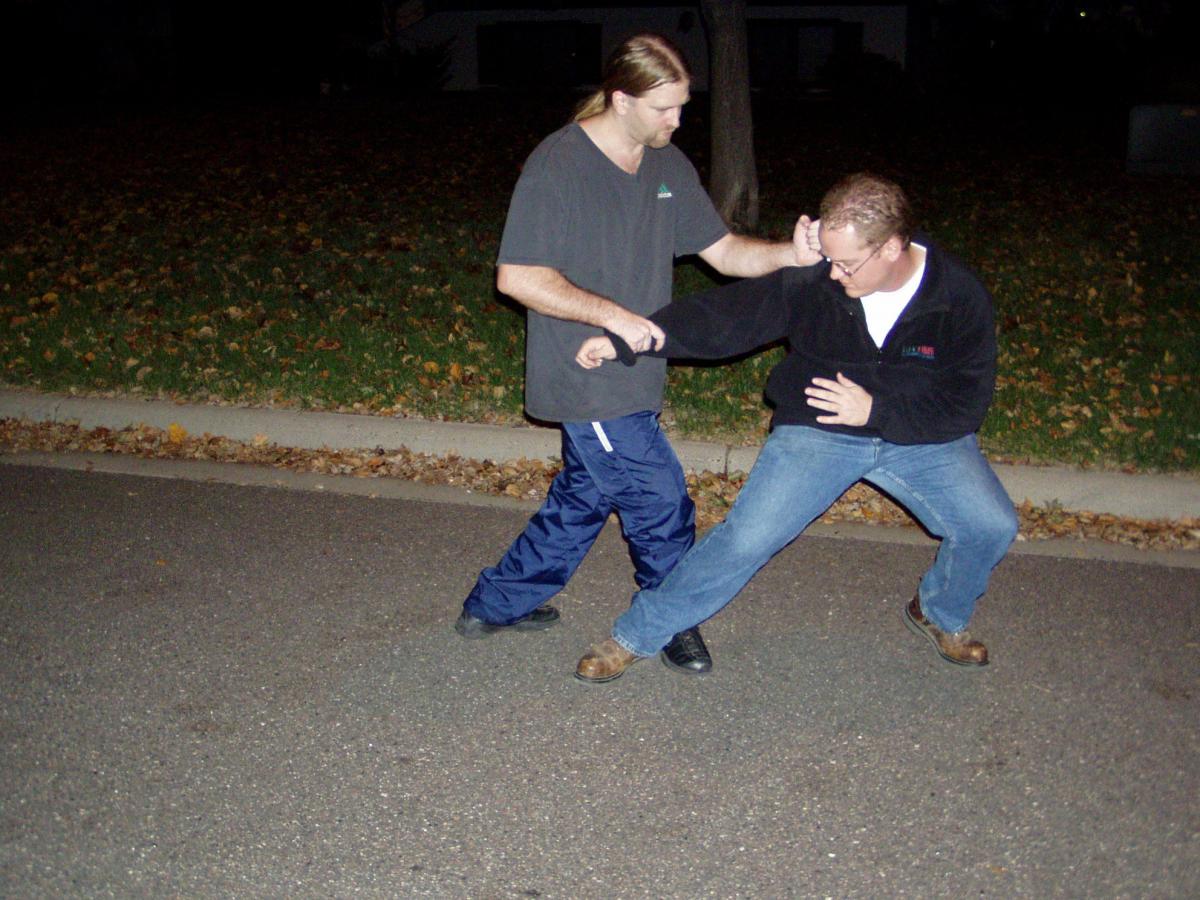Footwork and Distance
 Controlling Distance
Controlling Distance
One of the many reasons footwork is important, is to control distance. In general, each type of fighting has its preferred range. Whether you're a grappler, boxer or kicker (close, middle and long range) you want to fight from your preferred range and not your opponents. For example, take a grappler who primarily works his ground fighting but neglects his footwork and entries. If he fights a boxer with better footwork, each time he tries to enter, the boxer will step back maintaining a middle range and hitting the whole time. This will ensure the fight never goes to the ground. On the other hand, if a boxer or kicker practices mostly strikes from a stationary position in front of a heavy bag or focus mitts, they will likely stand stationary during a fight. At this point if a grappler tries to enter on him, the boxer will throw strikes standing still. This means he will usually get only one strike off before he's in grappling range and possibly taken to the ground. Now if you add weapons, controlling distance becomes even more important and will be heavily dependent on your footwork. It's best not to neglect your footwork in favor of fancy techniques. Without good footwork you will have a hard time getting in position to use those techniques.
Judging Distance
It's very important to judge distance. Many schools teach their students to throw strikes with full extension that end a few inches from their partner for safety. The problem with this is the attacker learns to attack outside of range and the defender defends strikes that would never hit them. How I prefer to teach is to have the students go slow enough and use control to pull their strike a few inches short while being in range (not fully extending the strike). When sparring (this way) or fighting, if someone throws a strike fully extended out of range rather than just trying to be safe you know they are doing it for one of three reasons.
- They misjudged distance in which case you can take advantage by counterattacking.
- They’re trying to see your reactions (how you will block, evade or counter) to know how to best attack you next.
- The attacker is trying to pull you out of position with a false attack getting you to open your guard by chasing an attack that isn’t real then stepping in with the real attack.
So it's best if you don't block any of these, as you are not in real danger until the attacker moves into range this way you maintain your guard and don't give your opponent any information. It is equally important for the attacker to know their range with all of their strikes and to use the appropriate strike for the range they are in and to not attack out of range as this can create an opening especially with weapons as an attack out of range might bring your attacking arm into range for a counterattack.
